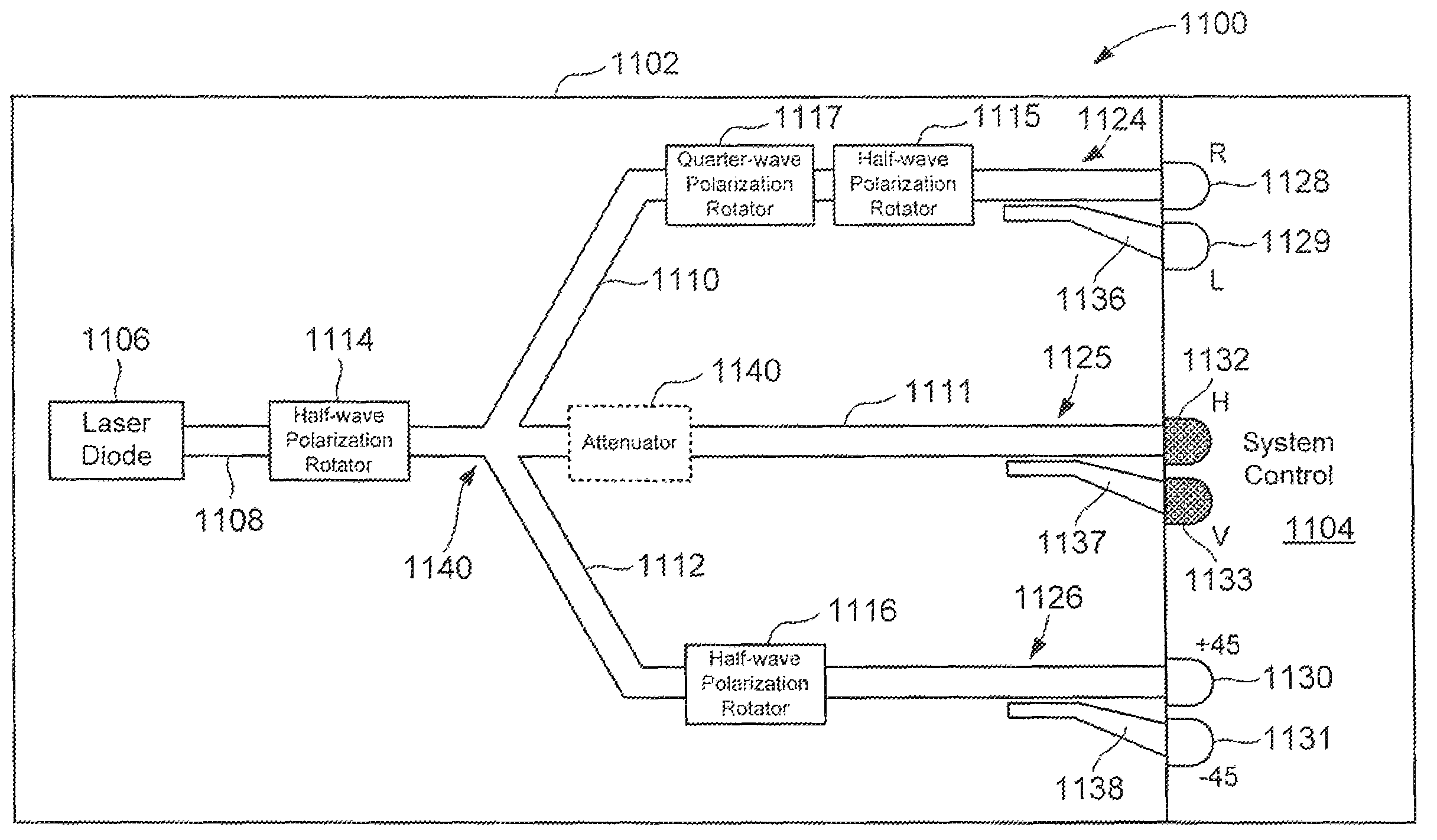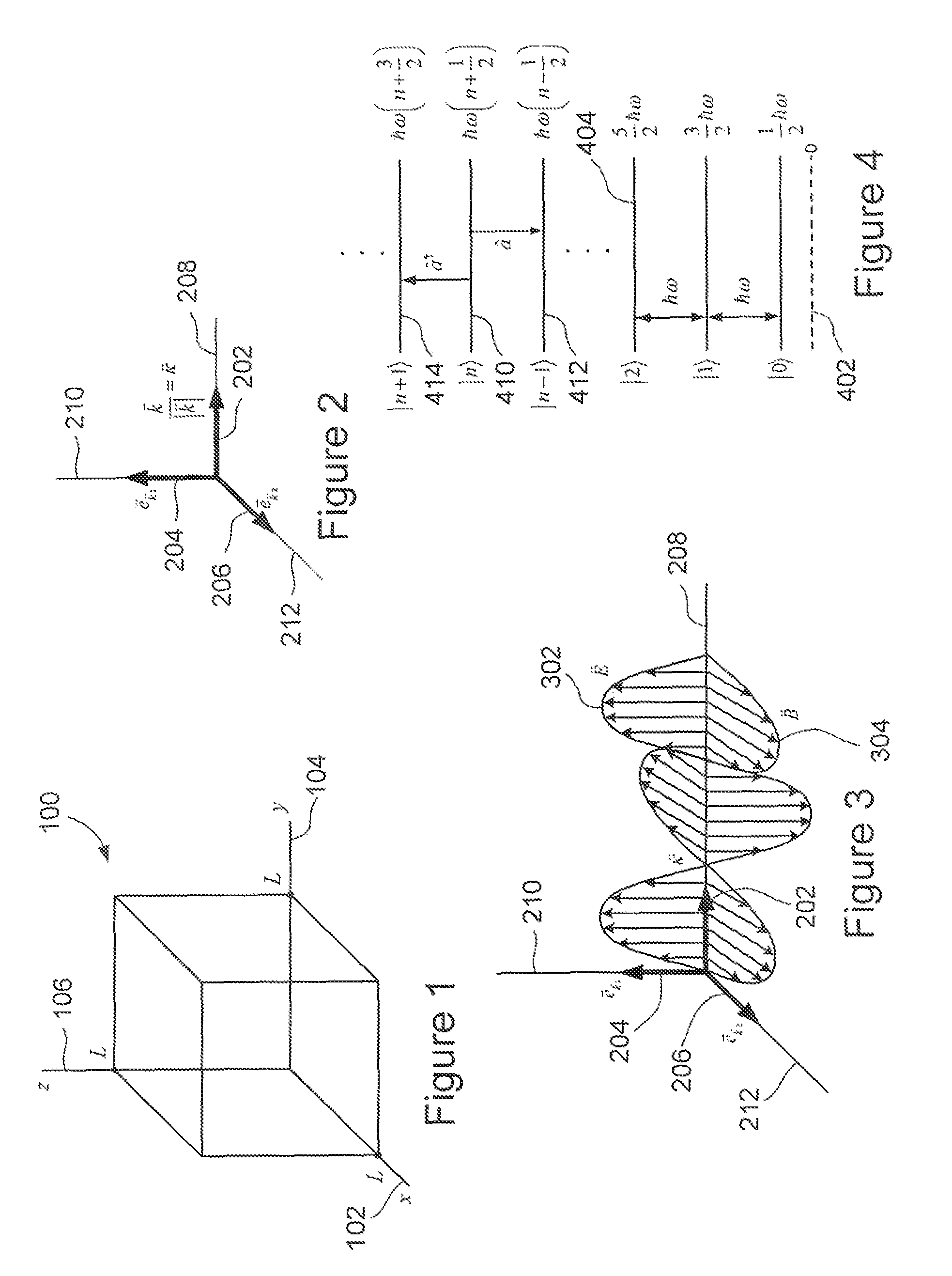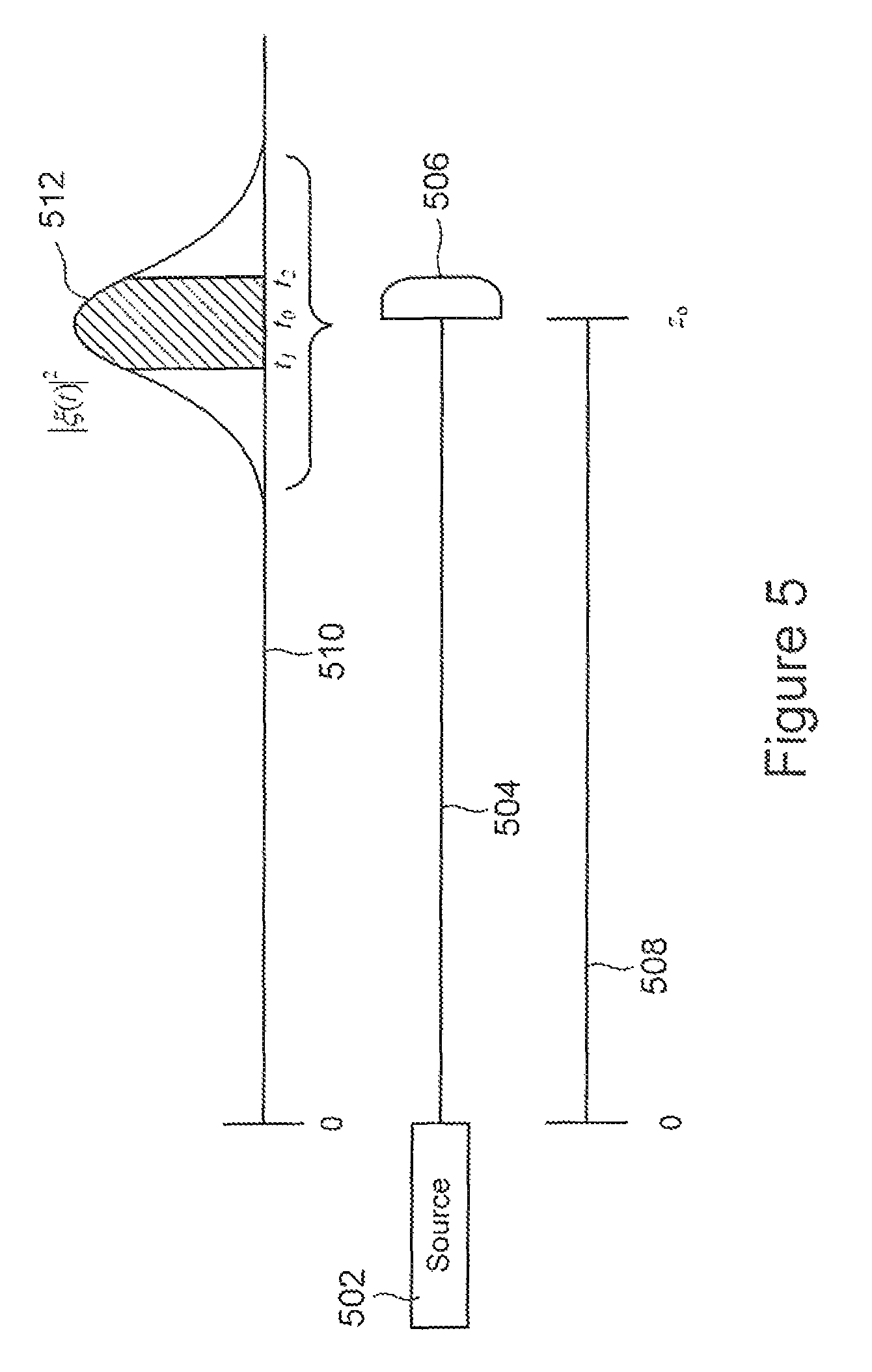Self-authenticating quantum random bit generators
a quantum random bit and self-authentication technology, applied in the field of random number generators, can solve the problems of inability to evaluate the true randomness of the sequence, inability to use hardware-based random bit generators to evaluate the reliability of sequence randomness, and inability to overcome uncertainty with refinement of measurement methods and measuring devices
- Summary
- Abstract
- Description
- Claims
- Application Information
AI Technical Summary
Benefits of technology
Problems solved by technology
Method used
Image
Examples
Embodiment Construction
[0036]Various embodiments of the present invention are directed to self-authenticating quantum random bit generators (“QRBGs”) that can be integrated into optoelectronic devices. System embodiments of the present invention generate sequences of random bits and include quantum-mechanical-based methods that can be used to evaluate and authenticate randomness of the sequence and remove biased bits from the sequence. System embodiments are also small enough to be included in optoelectronic devices, such as personal computers, servers, and portable electronic devices, just to name a few.
[0037]Embodiments of the present invention are mathematical in nature and, for this reason, are described below with reference to numerous equations and numerous graphical illustrations. Although mathematical expressions, alone, may be sufficient to fully describe and characterize embodiments of the present invention to those skilled in the art of quantum optics and quantum information, the more graphical...
PUM
 Login to View More
Login to View More Abstract
Description
Claims
Application Information
 Login to View More
Login to View More - R&D
- Intellectual Property
- Life Sciences
- Materials
- Tech Scout
- Unparalleled Data Quality
- Higher Quality Content
- 60% Fewer Hallucinations
Browse by: Latest US Patents, China's latest patents, Technical Efficacy Thesaurus, Application Domain, Technology Topic, Popular Technical Reports.
© 2025 PatSnap. All rights reserved.Legal|Privacy policy|Modern Slavery Act Transparency Statement|Sitemap|About US| Contact US: help@patsnap.com



